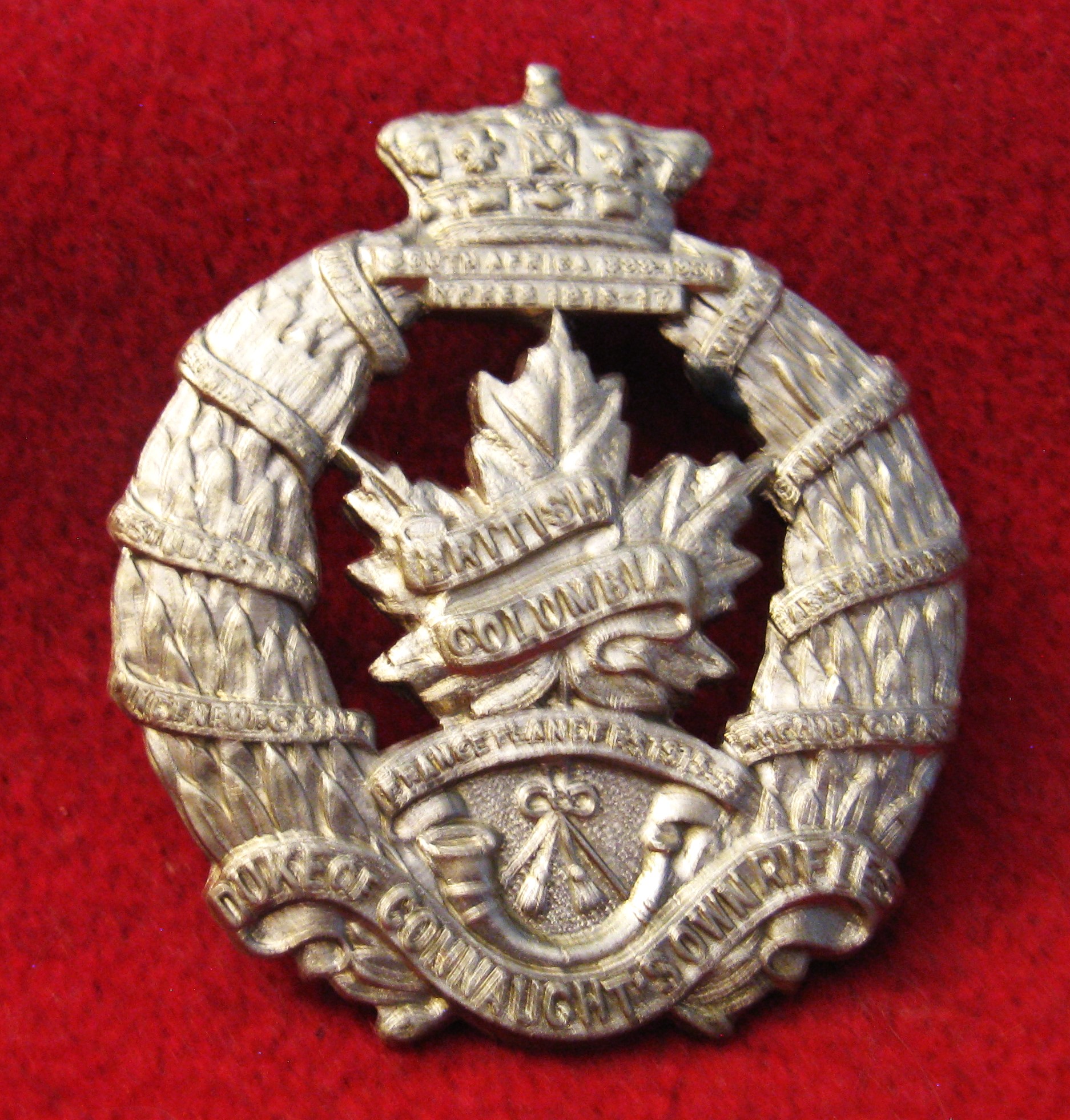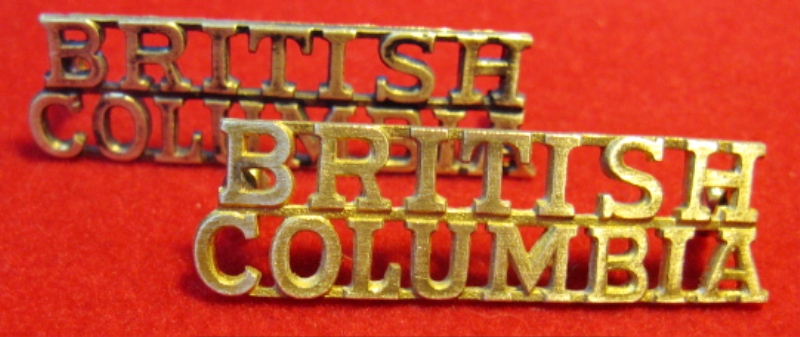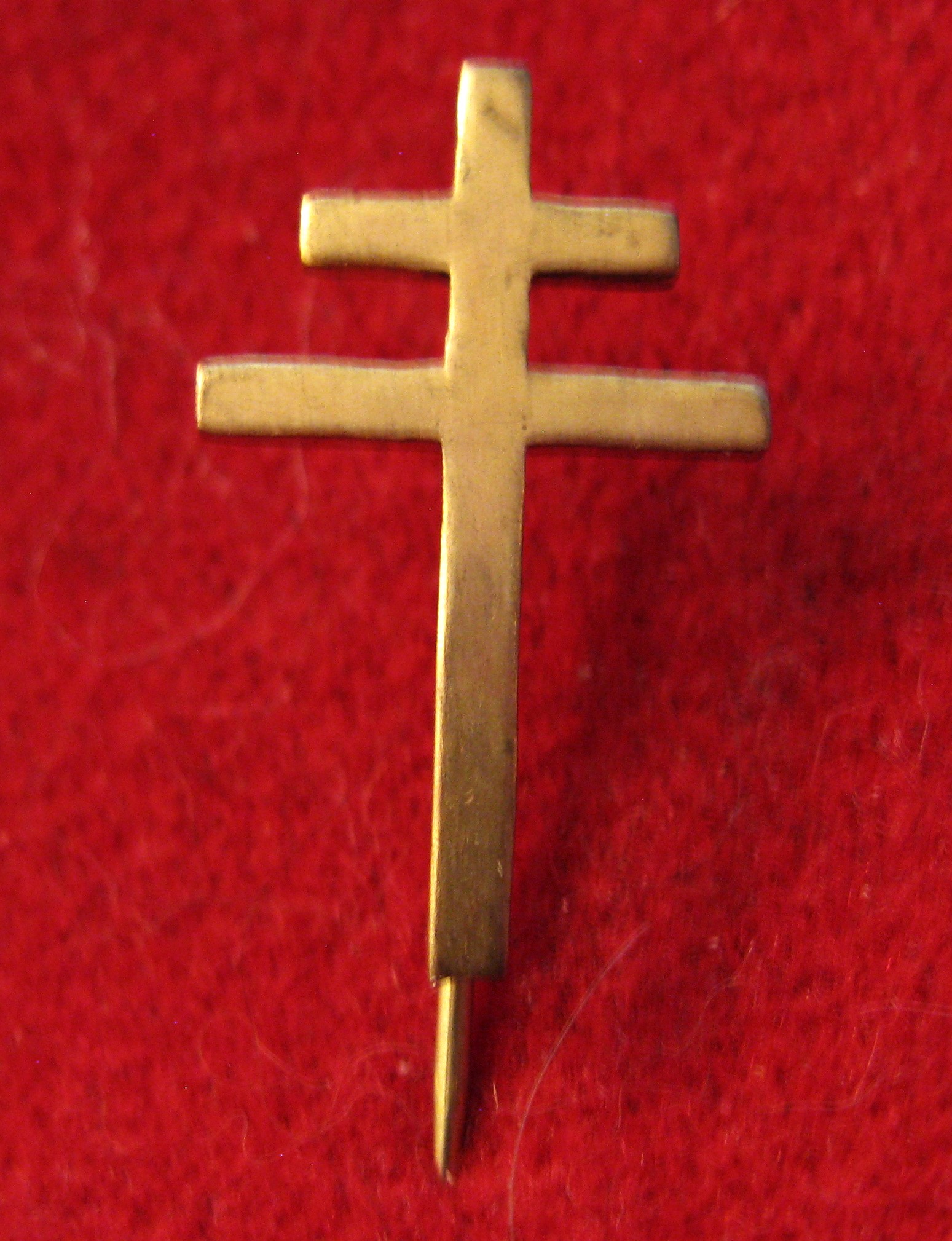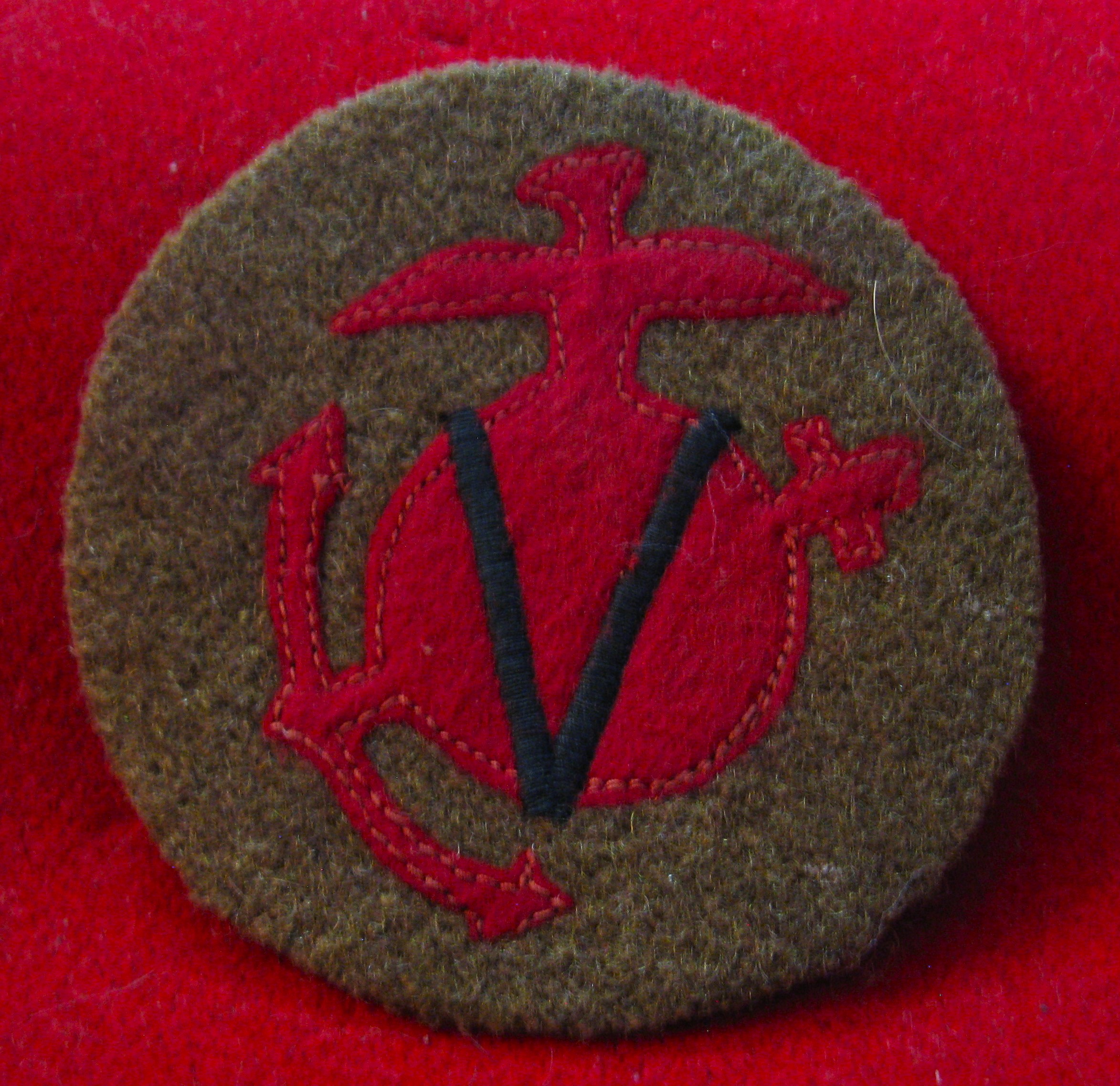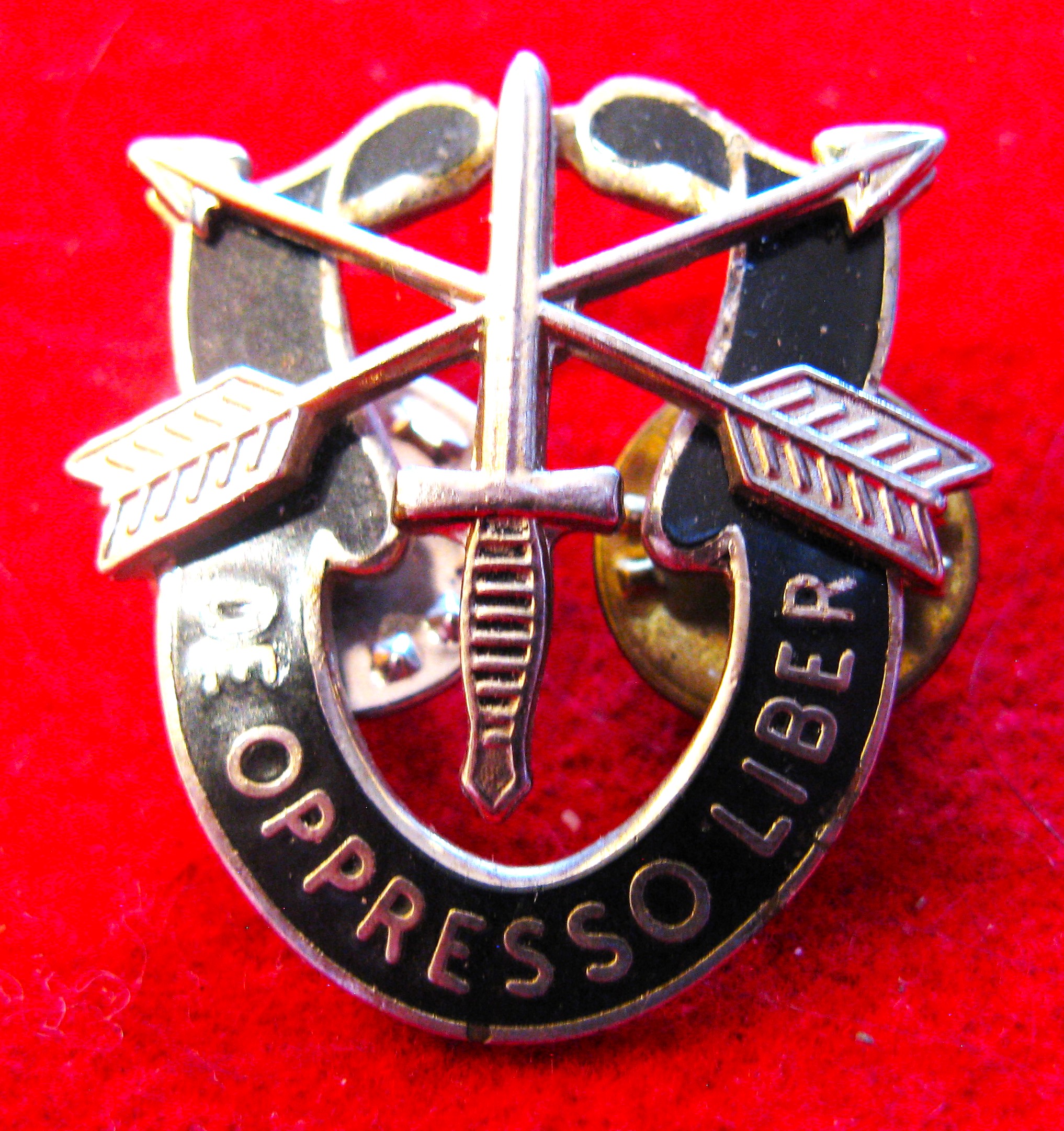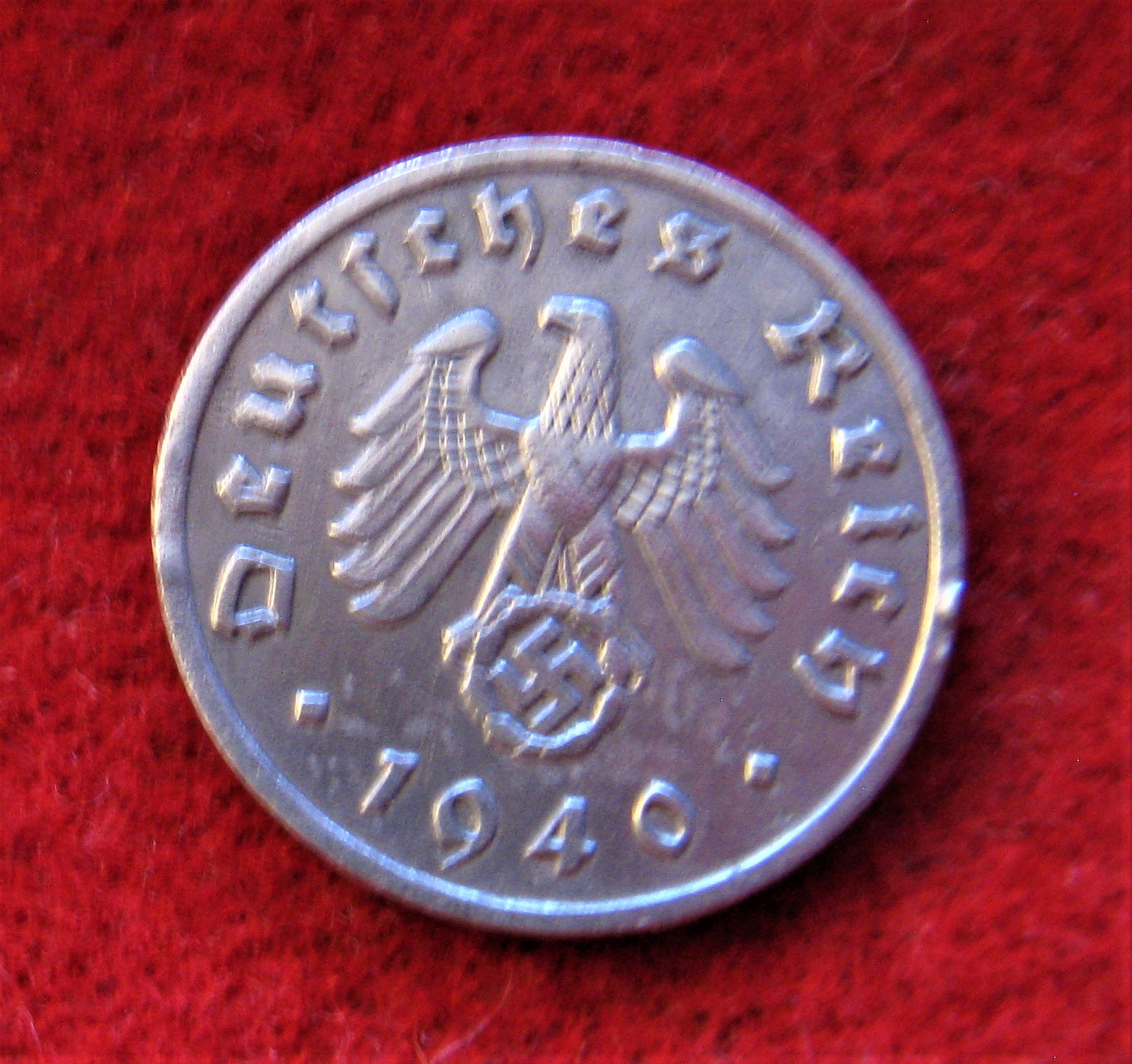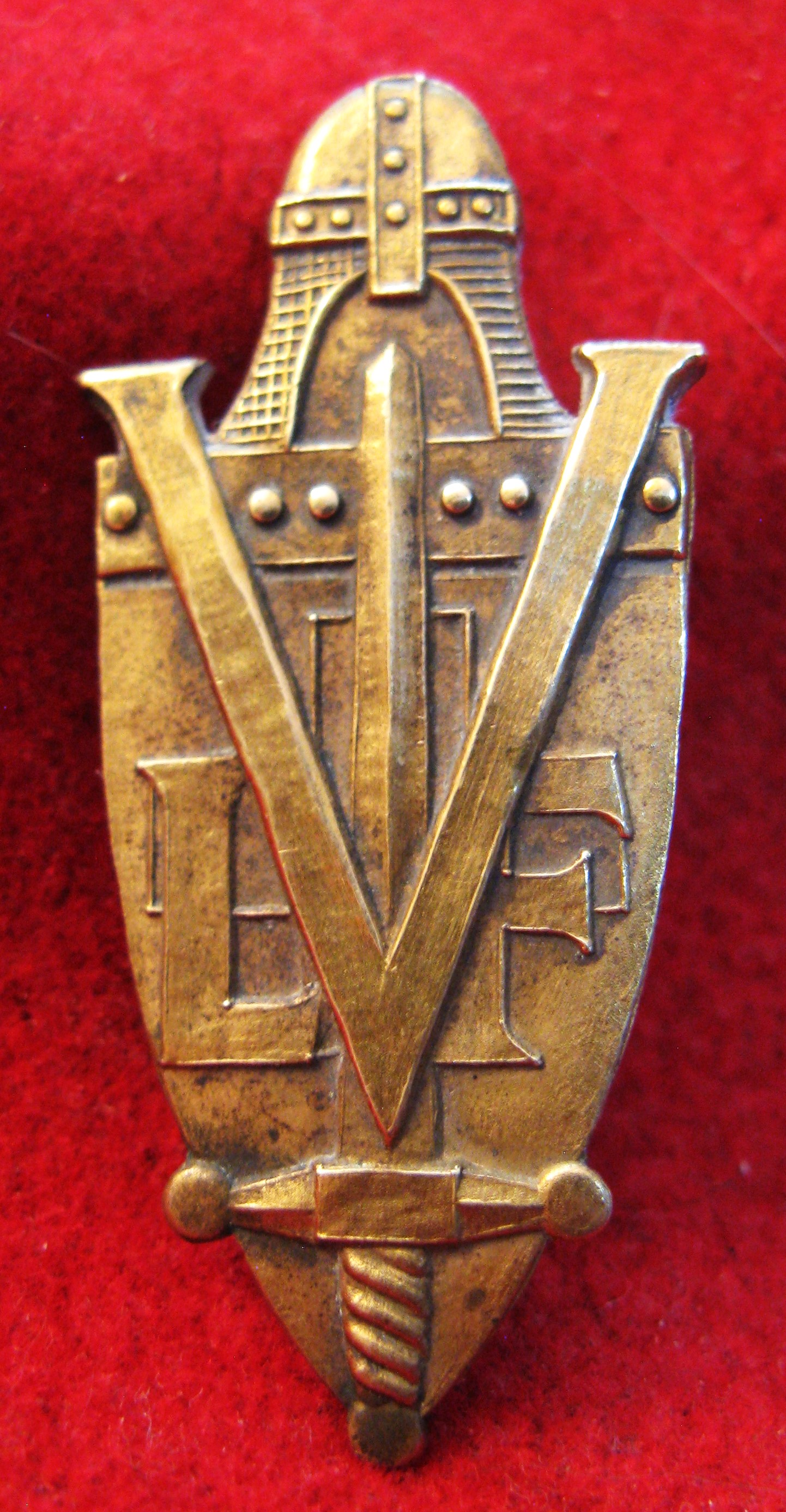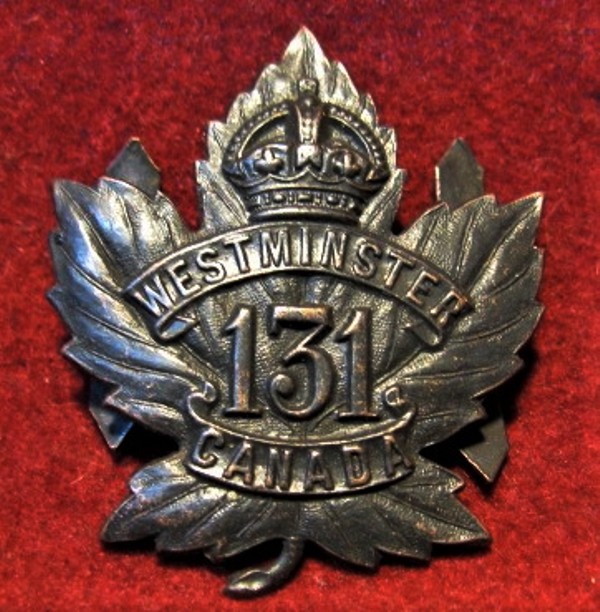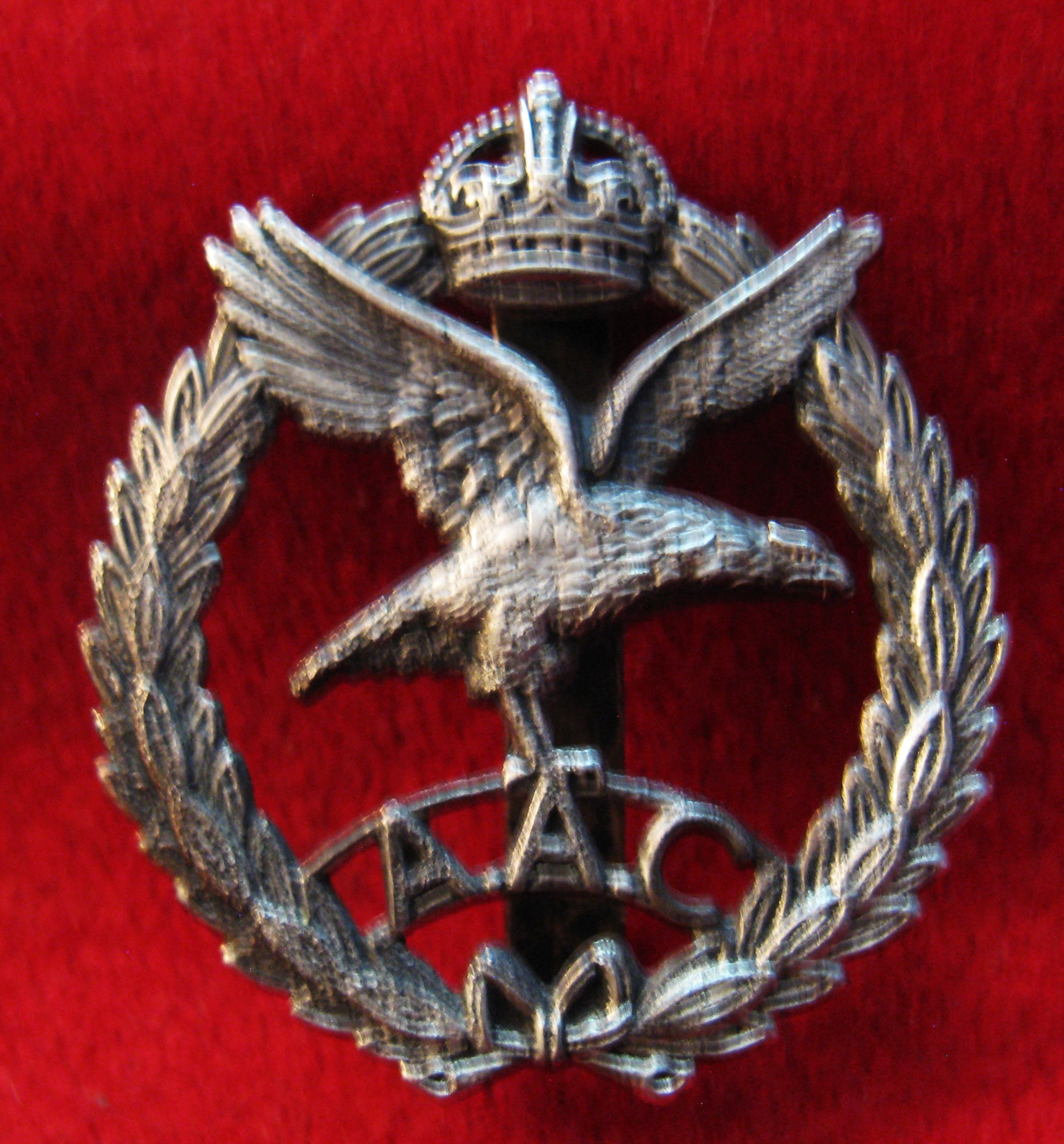WW2 era king's crown RCEME Collar Badge set of 2 (1st pattern)
#00002612
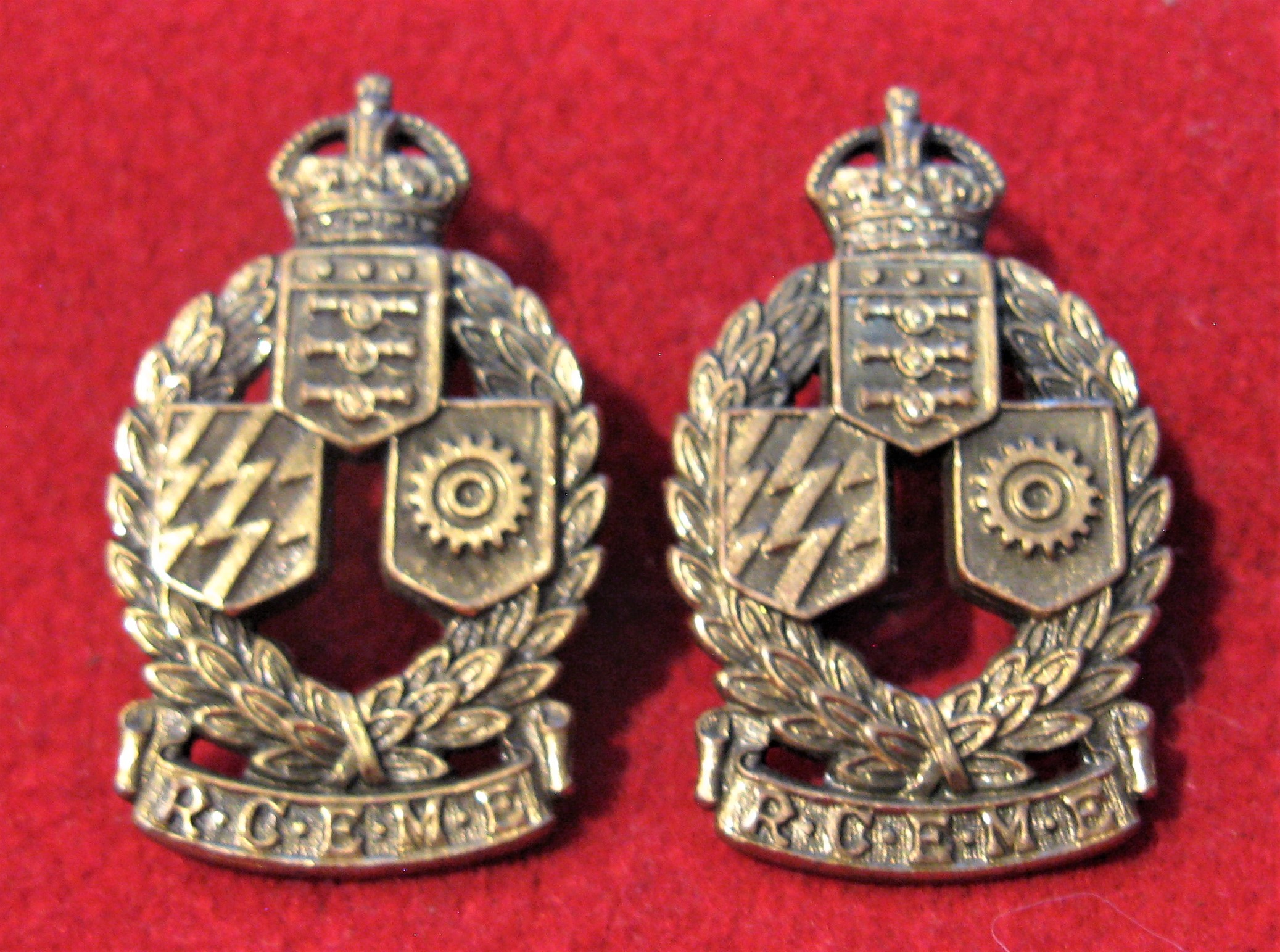
|
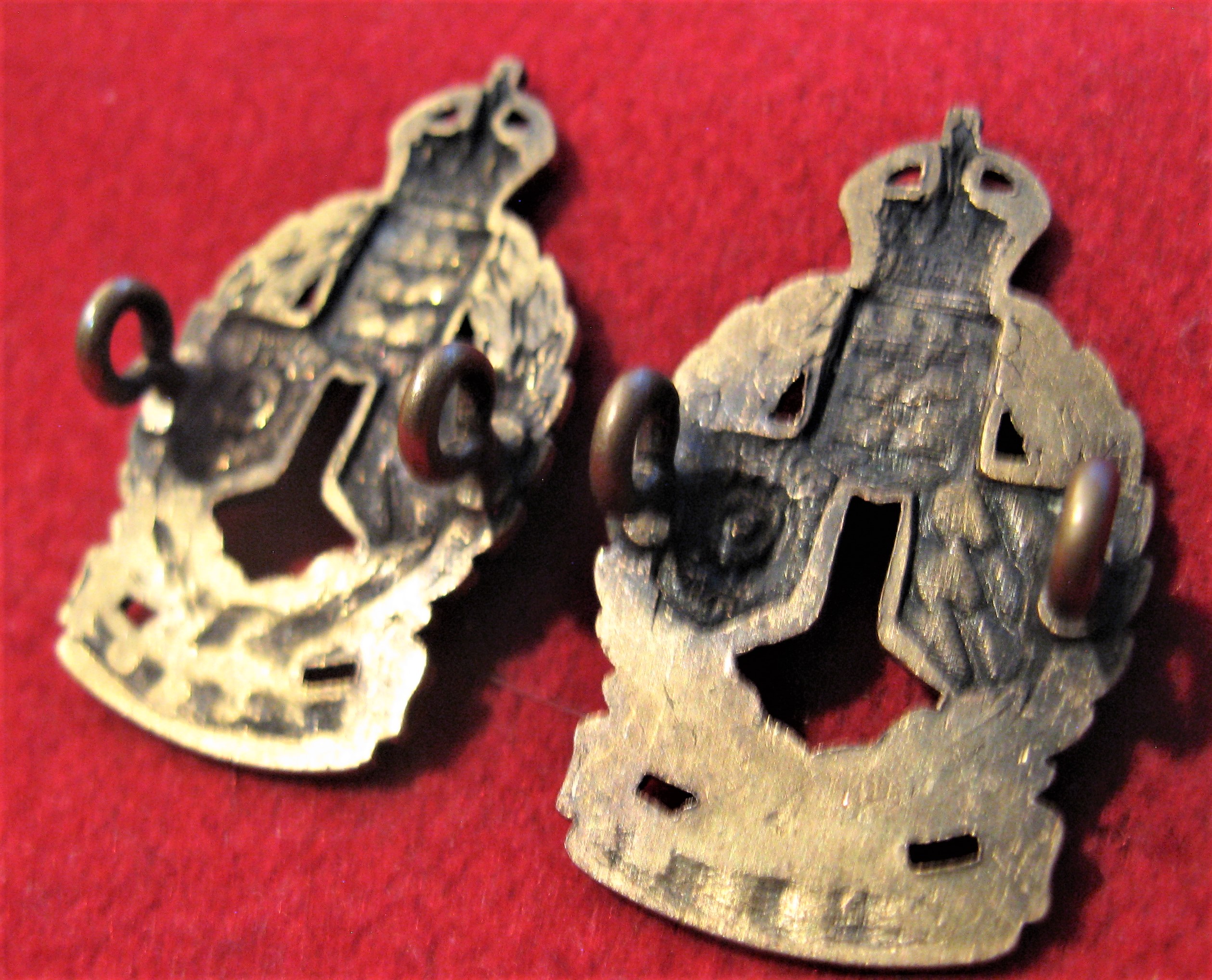
|
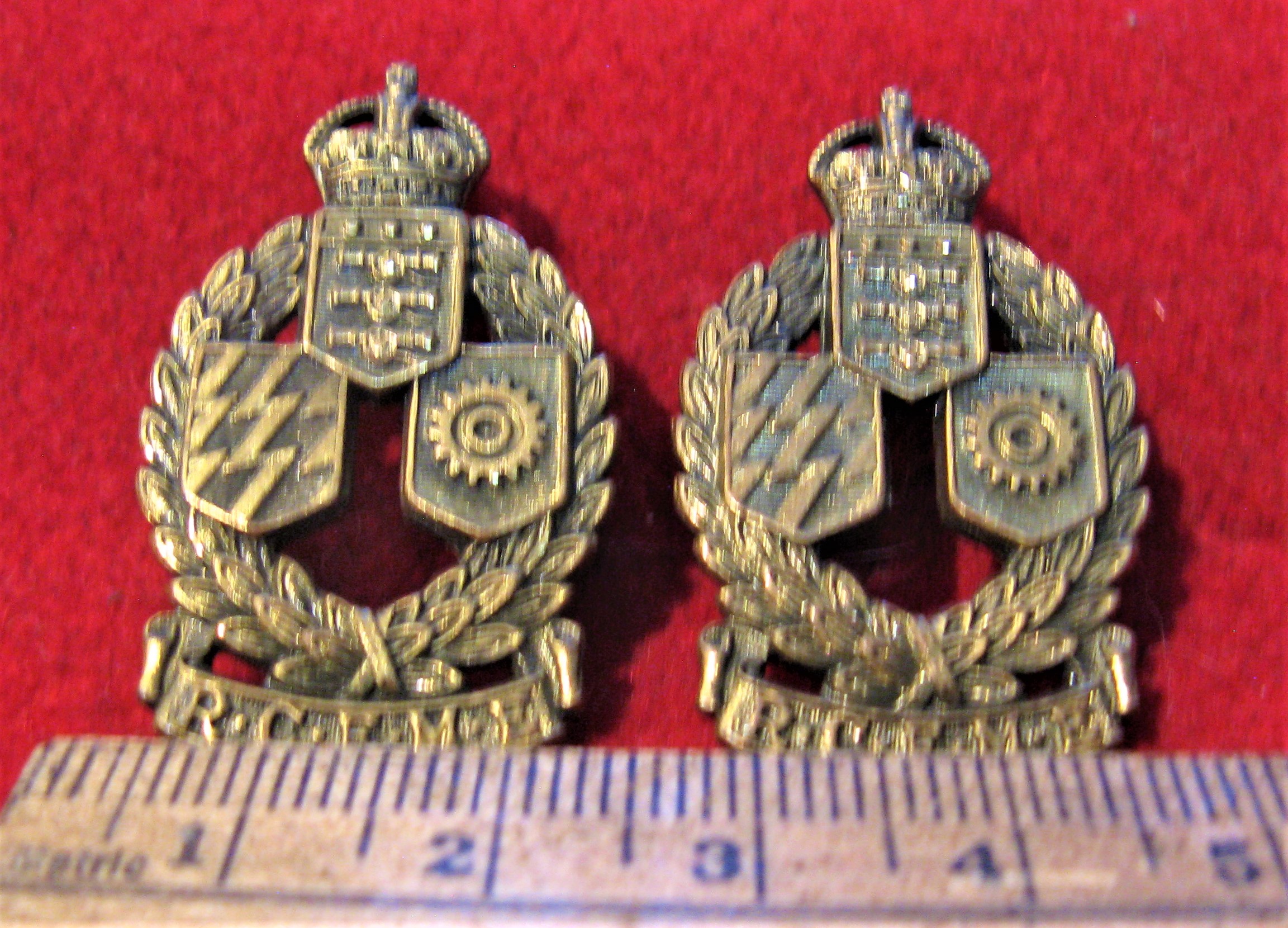
|
| Price: | $49.00 | |
| Shipping: | Canada: $4.00 | International: $4.00 |
| Insurance: | Canada/US: $30.00 | International: $12.00 |
| If insurance is declined the buyer takes all responsibility for damage or loss in shipping. | ||

|
S+H: $16.00 No GST Shipping to United States Change Country | |
You are viewing a Canadian WW2 era king's crown RCEME collar badge set of two. Made of brass with all "lug" style fasteners, original and in good order. A fine example of the first style of RCEME badges used in the Canadian army from 1944 to 1954. After it was changed to the bi-metal version used up until 1968. This pre 1954 style is perhaps rarer than the post WW2 version.
See below for History ...
Guaranteed 100% genuine.
On all our products we accept prepaid authorized returns within 14 days of shipping, for full product credit, if you are not satisfied. I will happily combine items to save shipping costs if you purchase other items as well...
Some History...The Royal Canadian Electrical and Mechanical Engineers came into being officially on 15 May 1944, from the combining of various elements from the Royal Canadian Engineers, Royal Canadian Army Service Corps and Royal Canadian Ordnance Corps, and following the organizational design of its British army counterpart, called the "Royal Electrical and Mechanical Engineers" (REME). Mechanized equipment use increased drastically during World War II. This gave rise to the need to have one corps specifically for the service and maintenance of this equipment. In WWII trucks had become the most important means of transportation and logistic support, armoured vehicles had replaced cavalry, weapons were becoming more complicated, along with the new radio and radar equipment. Therefore it became evident that having a different corps for each job would no longer work for the new modern, mechanized army of WWII. A new corps was set up called the "Royal Canadian Electrical and Mechanical Engineers" or RCEME for short. RCEME is pronounced "REEMEE" as in the British "REME". The original RCEME structure incorporated 25 different trades and sub-trades, employing specialists for each particular job in order to train and deploy them in time to meet the war's demand. While it was somewhat bulky, it was nonetheless a centralized structure for maintaining the Army's everyday equipment which was more efficient than the previous system of having each corps perform its own equipment maintenance, and also allowed for a greater degree of specialization within trades.


